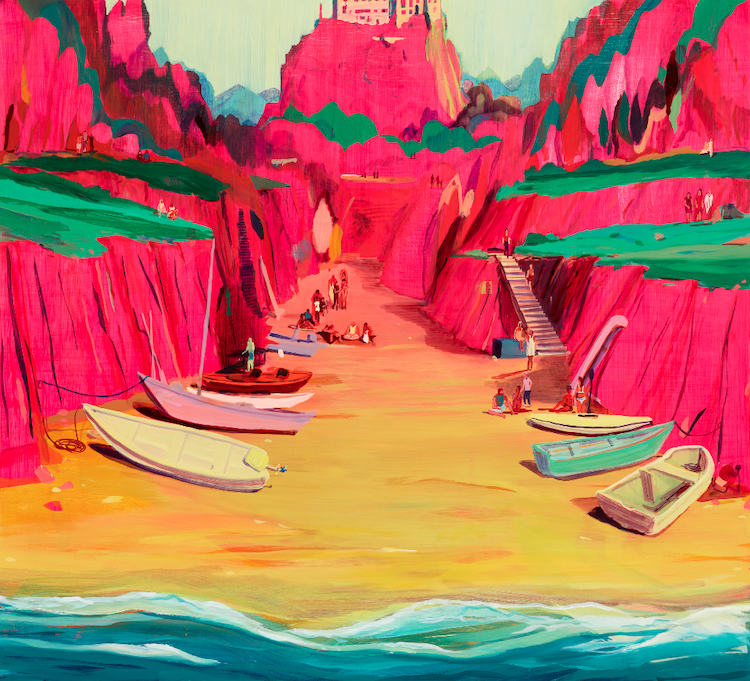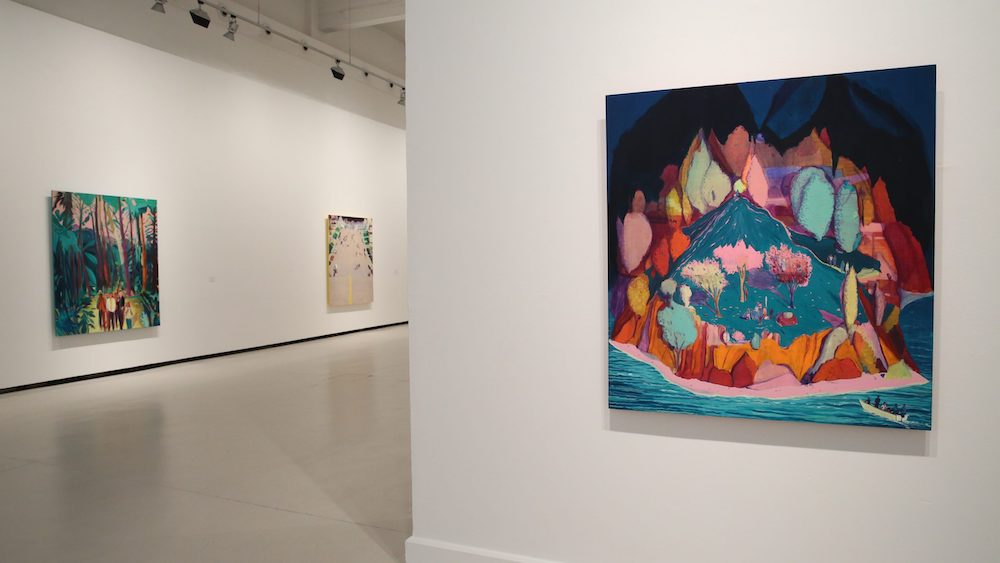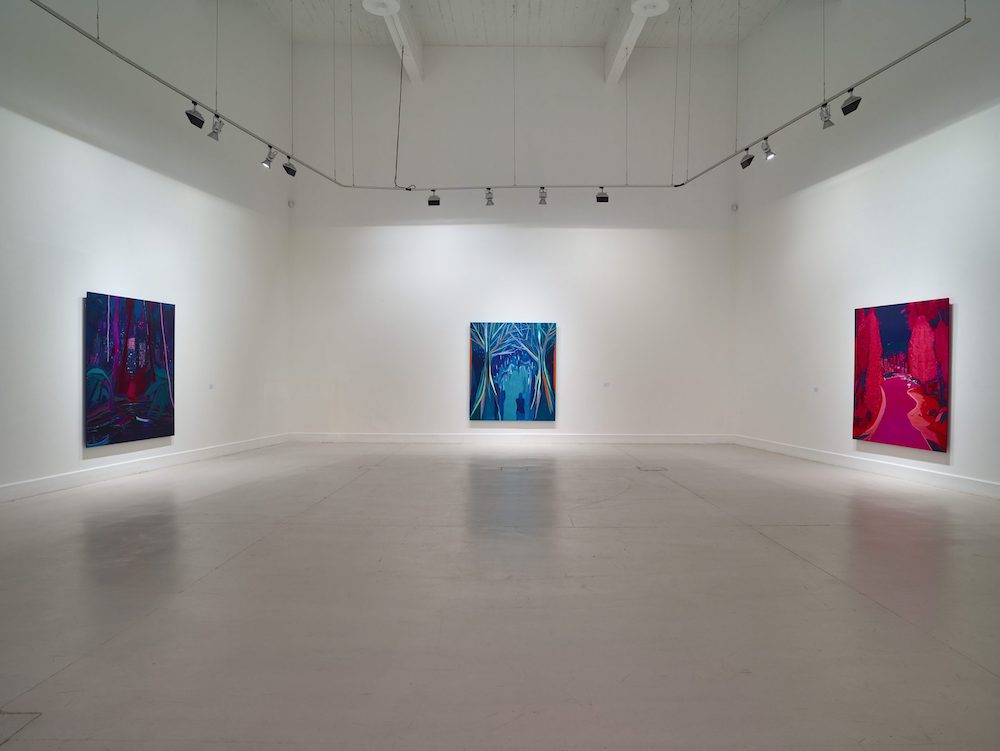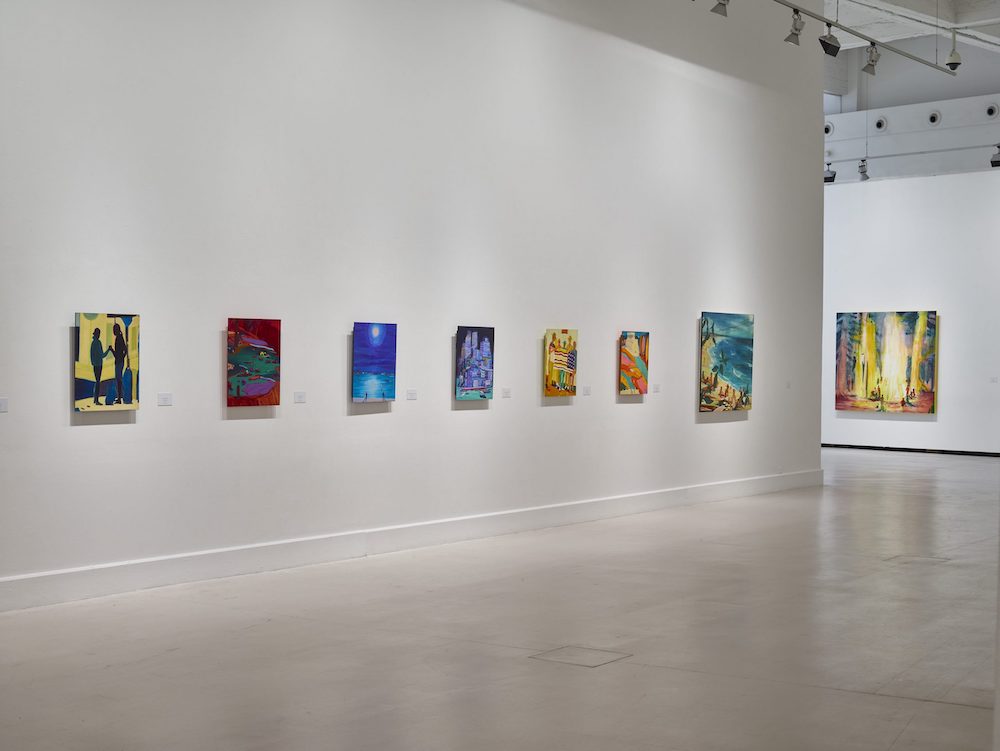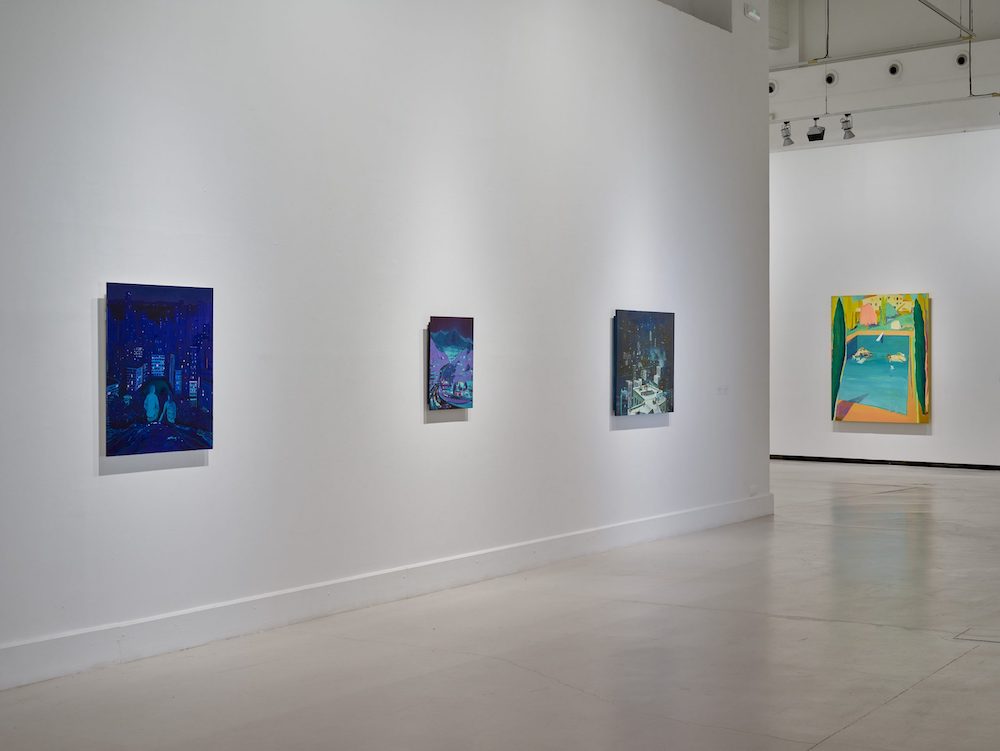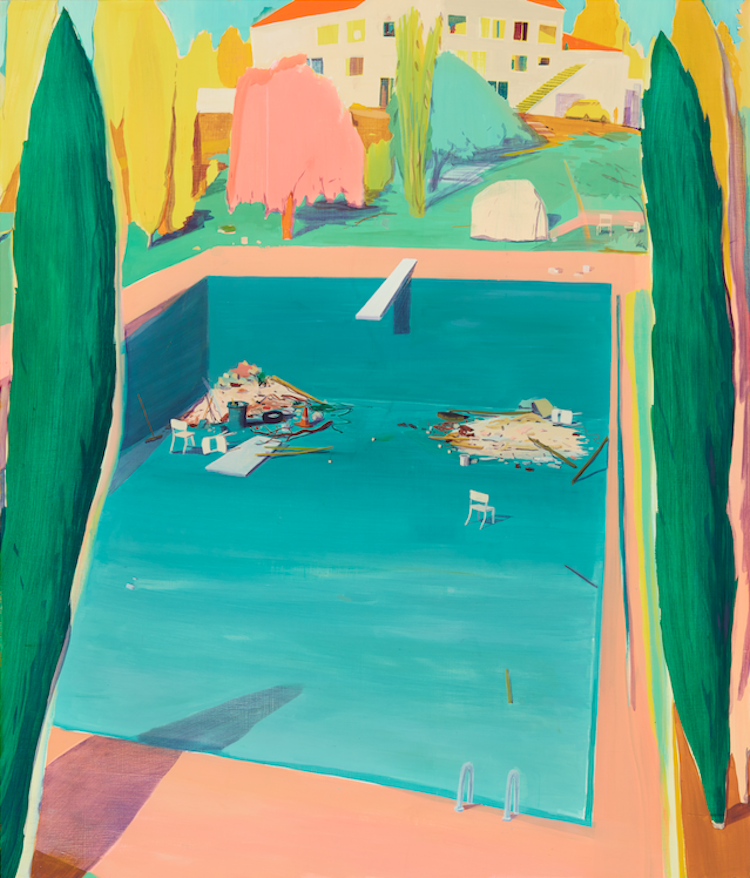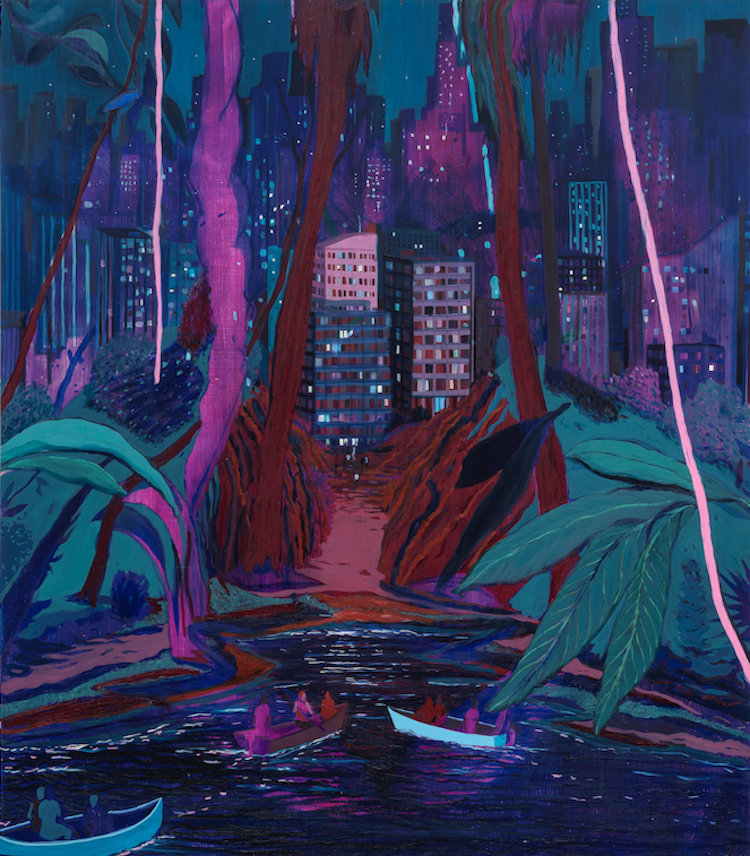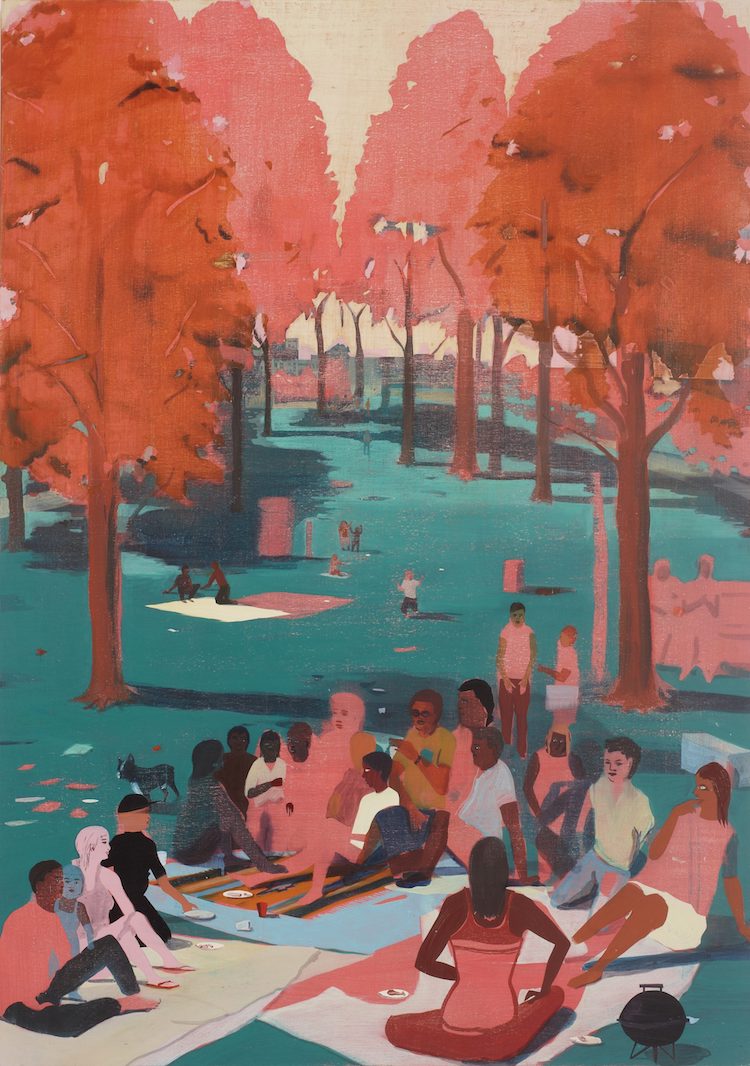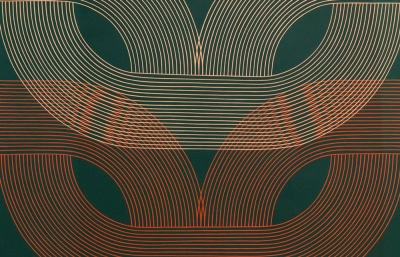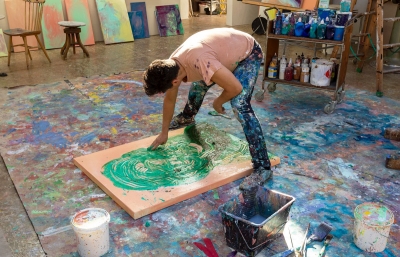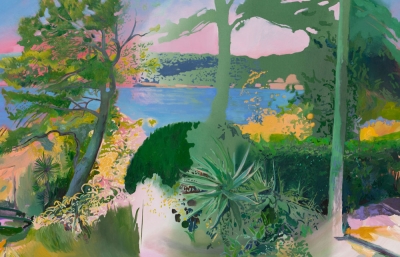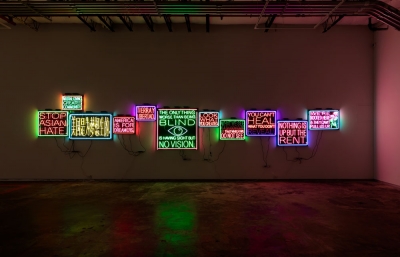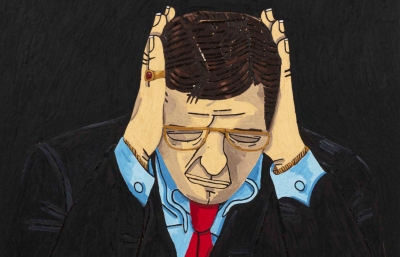The Centro de Arte Contemporáneo de Málaga presents for the first time in Spain the exhibition curated by Helena Juncosa, After The Gold Rush, by the artist Jules de Balincourt. The sample is made up of forty paintings of various formats that cover the last decade of his artistic production. His paintings oscillate between utopia and dystopia, preserving a social, cultural and political dimension, although his more recent paintings seek a more spiritual or existential approach. His works are represented with autobiographical connotations, individual or collective portraits and landscapes that run between chaos and harmony, inciting encounters or escapism, through which Jules de Balincourt invites the viewer to reflect on life experiences.
His paintings move between abstraction and figuration, the real and the imaginary, allowing him to reflect on issues such as the individual versus the community, nature versus architecture, leisure versus work, and the local versus the global.
From Balincourt's beginnings in the art world focused on experimentation with ceramics and enamels. The knowledge he gained from modeling clay was instrumental in his approach to painting, as he switched from enameling to oil paint and ceramics to wooden supports.
During its creation process, it sand the surface of the support on which it manipulates templates and / or masking tape to delimit the lines and shapes, in addition to using oil and acrylic, creating a palette of vibrant and striking colors.
The artist is not based on preliminary sketches, but rather intuitively applies several layers of color in which he creates a landscape that is the result of the artist's memory or experience linked to visual culture and the way of living in the 21st century.
The title of the show After The Gold Rush refers to the artist's childhood experience as an emigrant to California from France, as his continuous travels and this fact have greatly influenced his work. The title does not refer to the California Gold Rush of the 19th century but to the transition to new beginnings, frontiers, and possibilities.
The sample composed of forty paintings of various formats between 2010-2020, covers the last decade of his artistic production. From the last year, the landscapes with bluish and violet tints stand out, such as Take Us With You (2020) and City Of Flights (2020) made expressly for the exhibition at the CAC Málaga, as well as Nocturnal City With Couple (2020 ) and Uphill And Downhill (2020) that will be exhibited for the first time in a museum.
As a starting point to learn more about the work of Jules de Balincourt, the work As Far West As We Could Go (2014) stands out, where it suggests the idea of displacement, assimilation and yearning for new beginnings as a utopian or ideal dystopian. In the artist's words, the work As Far West As We Could Go ( 2014), “is based on both my painting and the desire to paint: success and failure, nature and architecture, the individual and the community, the personal and the political , the artist and the object ”.
One of the characteristics of De Balincourt's paintings is the use of several layers of paintings through which he lets a glimpse of eyes in the upper part that observe the rural scene seen in the work Utopie Tyrannique (2010).
His works show idyllic scenes that hide disturbing narratives such as urban landscapes, rooftops, tropical landscapes, swimming pools, islands (such as isolated places but also shelters or lost paradises) ... that can be about travel or displacement but sometimes it is difficult to know if the groups of people who inhabit them are tourists or refugees.
While the painting They Each Had Their Lesson (2020) shows the architecture of a building composed of nine open cubes that evoke the beginning of modernist architecture, drawing a parallel between the normative rules of architecture and the teaching experience in a local school.
The interior space also takes center stage as shown in We Come Here To Forget (2014), a room of a large museum in which several groups of people or couples are lying on apparently bored or tired carpets, a peculiar scene where the museum acts as a container of knowledge that over time falls into decline or into oblivion and to which it can be directed to take refuge or nourish itself from that content displayed in the room.
The artist explores the border as a concept in contemporary culture through California landscapes where the relationship between man and nature is revealed, as in his works Boardwalk Barter (2013), Hackers (2013), Firepeople (2013) or BBQ Sur L'Herbe ( 2013) where people who are part of a community seek to find themselves or take refuge.
The island as an element is one of the resources used by the artist to refer to isolated places or places of refuge, this time it is the artist's self-portrait as seen in Misfit Island (2014) where from a certain perspective it looks like the portrait of a man with his gaze directed to the left in shades of blue. However, in the vicinity it shows an island, in which boats can be seen in the bluish background, and the furrows on the face are people who live on that island.
The works dated 2020, painted in Costa Rica, are a personal reflection, from the isolation on the periphery of Western civilization. Its landscapes reflect the relaxing presence of nature and manifest the need for a refuge away from the world we live in such as Nature's Gate (2020), Island Of The Seven Seas (2020), City People And Country Roads (2020), First Contact (2020), Fallen Monument (2020), Are You An Insider Or An Outsider (2020), An Island To Be Titled (2020).
In City People and Country Roads (2020) he denounces the division between the rural world and the urban world, showing a wooded landscape through which people pass in an apparently nocturnal scene due to the use of colors.



